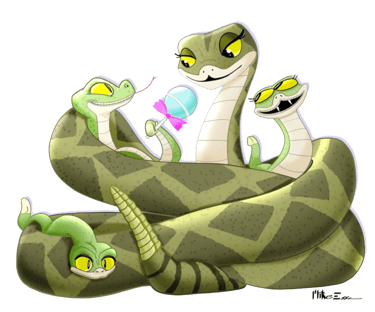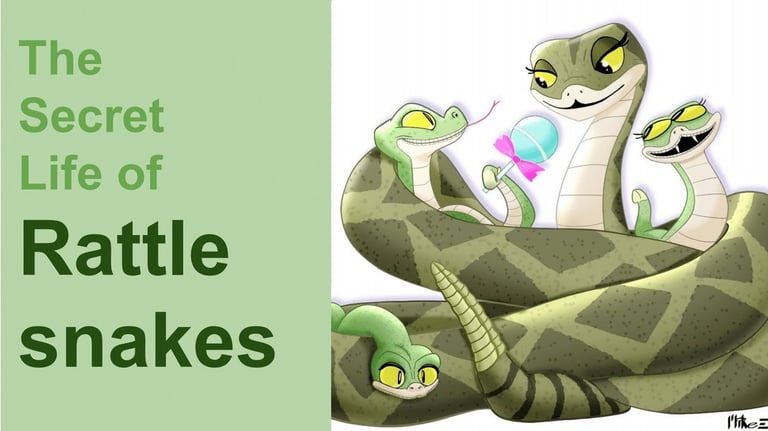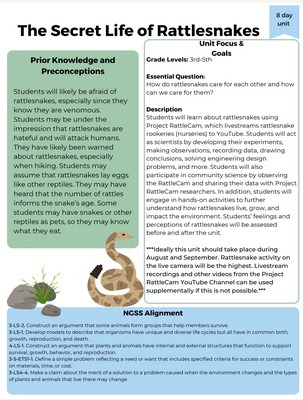
RattlEd
Transforming Students' Perceptions of Rattlesnakes Through Education
Science Through Snakes
RattleEd is an innovative 8-day curriculum for 3rd-5th graders designed to transform students' perceptions of rattlesnakes using observational, collaborative, and hands-on learning approaches. Throughout the unit, students will practice science by designing their own study, and collecting and presenting data using the RattleCam livestreams. Other activities include creating models, active ecology lessons, and an engineering challenge. The goal of RattlEd is to teach about rattlesnake behavior while challenging preconceived ideas about these misunderstood animals.
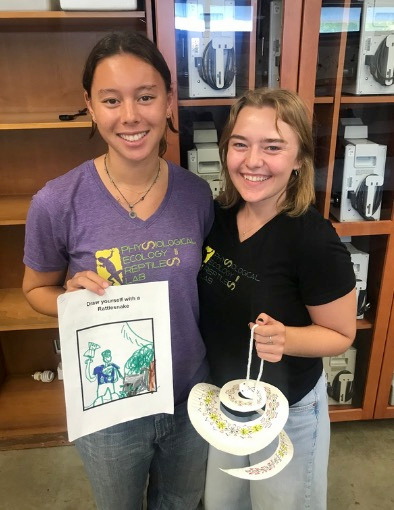

Ariel and Joy refined the RattlEd unit as part of the Frost Summer Undergraduate Research Program at Cal Poly.
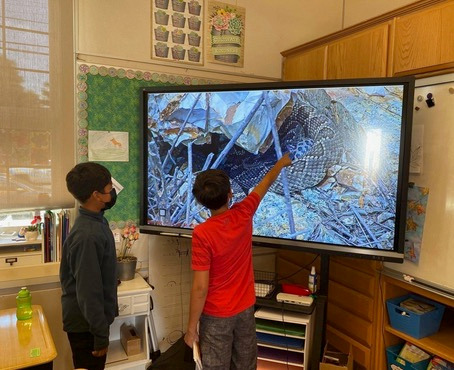

Students admire a newly born rattlesnake
Made by Students for Students
The RattlEd unit was designed and refined by Cal Poly Liberal Studies and Biology students: Joy Turkstra, Ariel Bigelow-Gee, Litzy Martinez, Anna Delmas, Madelyn Schenk, Riley Coleman, Grace Cadwalladerolsker, and Piper Tyssee. Project mentorship and guidance are provided by graduate students Owen Bachhuber, Max Roberts and Professors Emily Taylor (Biological Sciences) and Jasmine Nation (Liberal Studies). This project was generously supported by the William and Linda Frost Fund in the Cal Poly Bailey College of Science and Mathematics.
RattleEd Unit Resources
Teacher Resources Including slides, a unit plan and student science Notebook are available on Dropbox
The Secret Life of Rattlesnakes PowerPoint
3-LS-2 Ecosystems: Interactions, Energy, and Dynamics. Construct an argument that some animals form groups that help members survive.
3-LS-1 From Molecules to Organisms: Structures and Processes. Develop models to describe that organisms have unique and diverse life cycles but all have in common birth, growth, reproduction, and death.
4-LS-1 From Molecules to Organisms: Structures and Processes. Construct an argument that plants and animals have internal and external structures that function to support survival, growth, behavior, and reproduction.
3-5-ETS1-1 Engineering Design. Define a simple problem reflecting a need or want that includes specified criteria for success or constraints on materials, time, or cost.
3-LS4-4 Biological Evolution: Unity and Diversity. Make a claim about the merit of a solution to a problem caused when the environment changes and the types of plants and animals that live there may change
